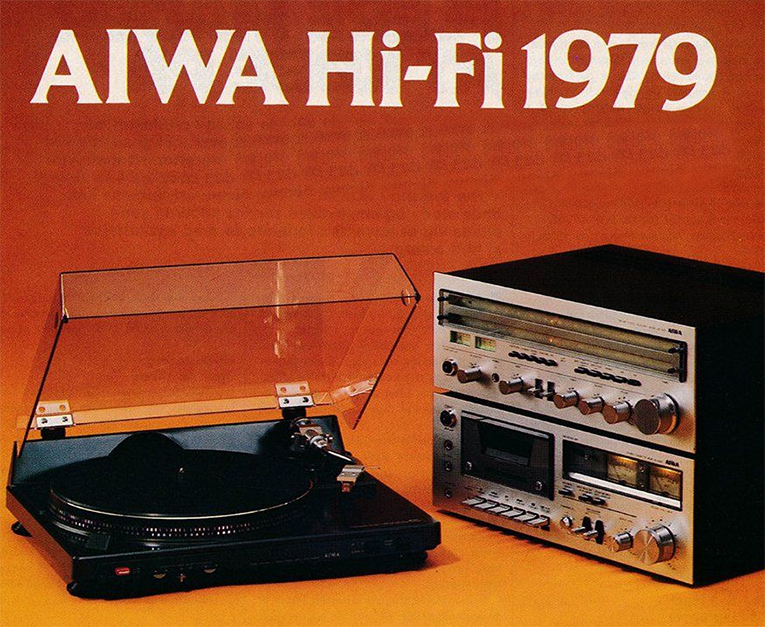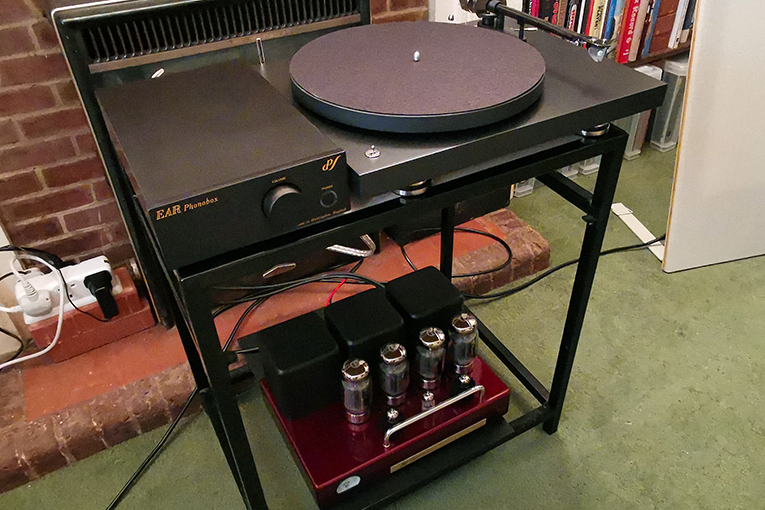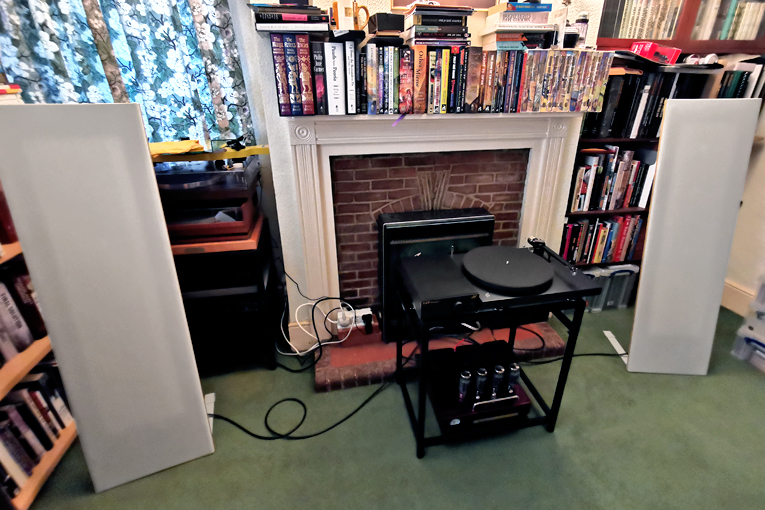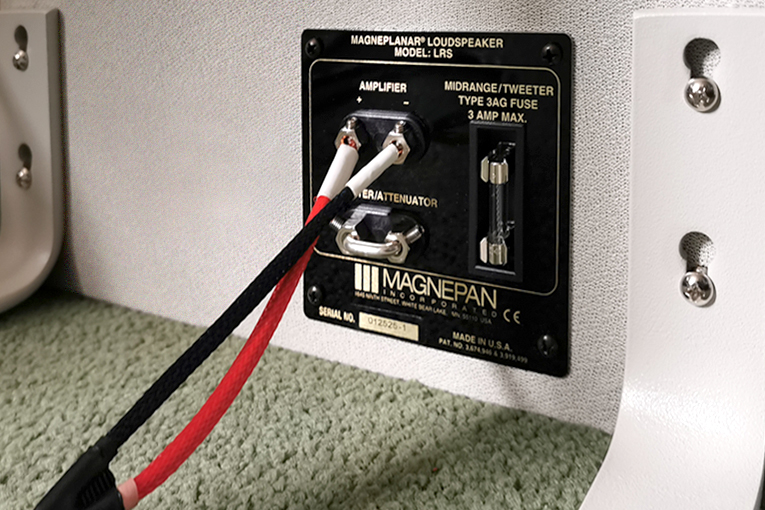 With the final stretch in sight, it is time for a recap, as I am at a loss to explain my recent inability to communicate, but it seems that I have failed to convey what this project represents. Ostensibly, simplistically, it is my attempt—and nothing more—at putting together a single-source system in 2021 for the same money spent when I was 16, the current equivalent of $700 (prices in USD unless indicated otherwise).
With the final stretch in sight, it is time for a recap, as I am at a loss to explain my recent inability to communicate, but it seems that I have failed to convey what this project represents. Ostensibly, simplistically, it is my attempt—and nothing more—at putting together a single-source system in 2021 for the same money spent when I was 16, the current equivalent of $700 (prices in USD unless indicated otherwise).
Adjusted for today’s values, that equals $5500, but I also added two levels of wiggle-room. The first is that, although prices have plummeted in real terms—e.g., you can still buy a pair of brand-name two-way bookshelf speakers in the UK for £99, just as you could in 1979—prices have gone up by more than the pure inflationary adjustment. They should cost £449 if nothing other than general inflation were applied. Instead, the audio industry has been frozen in time to the benefit of the consumer but not the manufacturer.

Which leads us to the second allowance. There are no more squeakingly unrealistic, tight-fisted scroungers on the planet than audiophiles, and all should be issued with T-shirts that read “How much for cash?” I therefore factored in an inevitable 10% discount. Give or take a few bucks, then, I set the target for the entire system at $6500.
At this stage, I’ve settled on the Pro-Ject Debut Pro turntable/arm/cartridge for $999, the EAR Yoshino Phonobox at $1795, and the Bob Carver Crimson 275 power amp at $2750. Call it $5500. That leaves around $1000 for speakers, but there’s a twist, which I’m saving for the next instalment, so that’s where we are at present. But before we get to the speakers and the certainty of you bombarding me with a litany of your preferred alternatives, here’s the explanation of the mission statement and the methodology.

Even though I am a full-time employee of the audio industry, as a reviewer, historian, consultant, and paid observer, I do not claim to have heard everything on the market, and every single day I learn of a new brand or three. A pox on reviewers who give the impression that they have.
Thus, while I appreciate those who send me emails saying “You should use . . .” or asking “Why didn’t you use . . . ?” any of a few hundred alternatives to my choices so far, that completely misses the point I hope to make, which is that there’s too much out there to absorb. Indeed, I could offer you a dozen alternatives to this system, but that would ignore the circumstances which inspired this series.
So here’s a reality check for everyone who thinks he (it is never a she) knows everything about every product ever made. While clearing out some magazines, I happened upon a hugely respected US hi-fi annual from 1993. Despite its authoritativeness and credibility, I know for a fact it was incomplete because I looked up far too many products—nay, entire brands—which were not included, many because they simply had no US importer. This is no criticism of the magazine’s Herculean efforts to create a useful directory.
Even accounting for omissions, it still listed over 6000 different products. Yes—SIX THOUSAND. I looked at earlier editions and noticed there were annual increases; a decade earlier there were around 4000 entries. With my most pessimistic guesstimate, and assuming that there were far fewer products available circa 1950 when hi-fi separates arguably became the de facto arrangement for audiophiles, I would posit that there have been 2000 products on average, available globally, every year for 71 years. That’s a cumulative total of 142,000 over the decades. Even if you halve it, that’s over 70,000 different audio components since hi-fi (as we know it) began. If that’s the case, I have heard roughly 2% of them in 53 years.
Anyone with a brain instantly accepts that nobody can hear (or even know of) every product ever made. It is why I still bristle at the mere thought of that coterie of powerful UK journalists who, in the 1970s, preached from their pulpits, at a time when hi-fi magazines in the UK exceeded 100,000 circulation, that their crappy, little, achingly bright, zero-soundstage British system—note “system,” not “systems”—was the best in the world.
It was always stated as a hard fact, not merely “in my experience” or “in my opinion,” when I knew categorically that they had never heard SAE, Audio Research, Ohm, Magnepan, Dayton-Wright, or countless other US products not sold in Great Britain at that time, ad infinitum. Xenophobia, flattery, cajoling, and backhanders got the better of them, at the expense of the readers.
OK, so far we have an Austrian turntable and arm, fitted with a Danish or American cartridge depending on where you purchase it, feeding a British phono stage with output level control, into a US-made power amplifier. None of the brands are connected in any way. There is no marketing group hoping to see them matched with each other. They do not share distribution. It is what my mother would have called a “mishmash,” and it exhibits no deliberation attributable to external forces, e.g., jingoism or payola. It is what I would describe as a happy accident.
I must reiterate for the umpteenth time: this is not an attempt at creating the ultimate circa-$6000 single-source hi-fi system. It is not an attempt at devising a package that becomes a default, like the 1960s US solution of AR turntable, Dynaco amp, and AR or JBL speakers—or the Dual CS 505 turntable, NAD 3020 integrated amplifier, and KEF, Celestion, or Wharfedale speakers.
If anything, it is a system that is (1) utterly opposed to the draconian listing of must-own products at the expense of freedom of choice (which the Dual / NAD / small British two-way speaker forced on the British for a solid decade; (2) almost purely fortuitous, and is thus being used to illustrate the luck of the draw, finding a magical combination of completely disassociated products which happened to find their way to my listening room; and most importantly (3) my means of impressing upon you that in hi-fi, within the bounds of technical compatibility, anything goes.

Now back to the choice of speakers. As with the Crimson 275, I opted for something which really doesn’t stand much of a chance where I live, in the UK. For you in the USA, the Magnepan LRS quasi-ribbon speaker sells for $650 per pair. In the UK, with duty, 20% VAT (value-added tax), shipping, and the importers’ and retailers’ margins, the price skyrockets to £1195. At the time of writing, that’s $1633.80 in the US, or $2069.73 in Canada. And yes, it feels exactly like a manual prostate exam to the UK consumer.
This, of course, is not Magnepan’s fault, nor that of the importers, distributors, or retailers, because shipping and customs charges are facts of life, while Europeans’ ideas of sales tax—which is precisely what VAT really is despite it being called “value-added”—are extortionate. However, if you are reading this from the UK, I can only suggest that you turn to another column on this site, lest you become bitter.
When I first heard about the LRS, I knew I had to get hold of a pair. I had recently been in touch with Magnepan’s Wendell Diller, who contributed to the history of Audio Research. Wendell explained that the LRS was an oddity of sorts in the Magnepan lineup, as it was intended to serve primarily as an introduction to the brand, and at a far lower price point than the next least-expensive models. What they managed to deliver, like a crack dealer supplying that first dose for free, is a magnificent panel speaker for those of truly limited means.
 Wendell Diller
Wendell Diller
While I bang on and on about LS3/5As and I swear by Wilson Audio’s WATT/Puppy-derived models—now embodied in the Sasha DAW—I have a special place in my heart for panels. I own Quad 57s and 63s, loved my departed Apogee Scintillas, and use MartinLogans for all of my 5.1 channels in our lounge. Schizophrenia? No more than an oenophile drinking both reds and whites.
Anyway, a pair duly arrived, and I was immediately predisposed toward them because they weigh less than a bag of groceries and I can move them about without needing to call a friend, as I did when simply updating the spikes on the Wilsons. I tried them first with my reference system, attached to the D’Agostino Momentum stereo amplifier, part of a system which clocks in at 200 times the price of the Maggies. They were not embarrassed, any more than one would be humiliated by wearing a Swatch at a black-tie event, due to the pure honesty of the product.

You might wonder about the point of hooking up $650-per-pair speakers to an amplifier with so much power that I cannot get the needles to flicker unless I turn it up to the threshold of pain. Simply put, I found that the LRS speakers love ample wattage, hence a good match with the Crimson 275, and they can sound soft, so the sparkly Ortofon complements them. Moreover, there’s pride of ownership because they look cool as hell.
But there’s more to come . . .
. . . Ken Kessler
kenk@soundstagenetwork.com






















